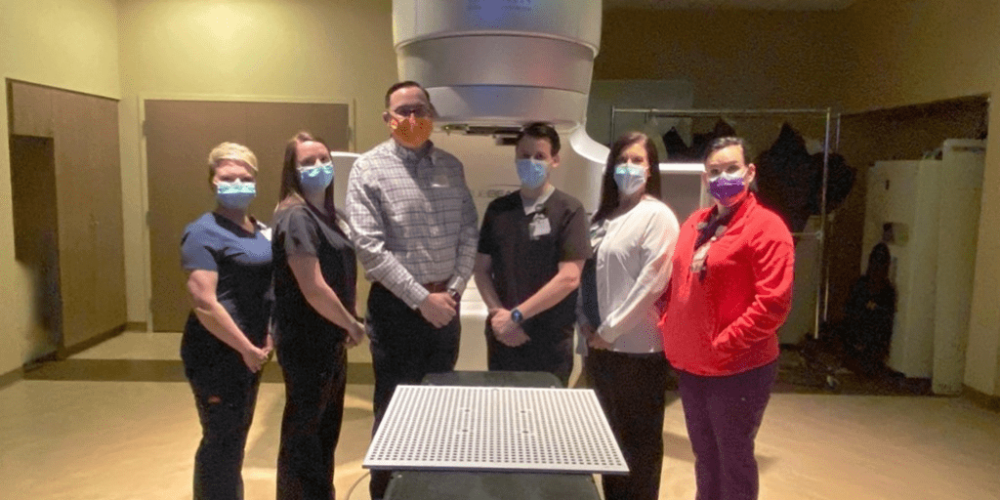“We’re believers because we saw it” The University of Tennessee Medical Center upgrades with AlignRT

The University of Tennessee Medical Center recently decided to invest in upgrading their radiation therapy technology and began the process of evaluating different systems. It was a decision that led them to increase their commitment to Vision RT’s SGRT solutions.
 We were getting ready to do a linear accelerator upgrade here on campus,” said Brett Miller, Lead Medical Physicist in the radiation oncology department. “When it came time to look into other options, as part of this upgrade, we looked at other products that did similar things, but we decided to stay with Vision RT because they are the market leader and we were happy with the product. When we saw some of the innovations and improvements that they made to the software, it just confirmed that this is the way we wanted to go.”
We were getting ready to do a linear accelerator upgrade here on campus,” said Brett Miller, Lead Medical Physicist in the radiation oncology department. “When it came time to look into other options, as part of this upgrade, we looked at other products that did similar things, but we decided to stay with Vision RT because they are the market leader and we were happy with the product. When we saw some of the innovations and improvements that they made to the software, it just confirmed that this is the way we wanted to go.”
In the end, the medical center decided to equip all three of its new Varian TrueBeam® linear accelerators with AlignRT® Advance systems. “We’re believers because we saw it,” said Miller, who thinks that working with SGRT is a huge advance on traditional motion management techniques. “It’s kind of like in the early days of the iPod, where early adopters saw that it was so much more incredible than carrying around a discman and discs. Once you cross that threshold, you don’t really want to go back. From a treatment standpoint, you’re going from having two or three points to set up your patient, to all of a sudden having a full array of their body contour. It’s a wealth of information and at the end of the day, the name of the game is getting the patient in the correct position and making sure they stay in that position for their entire treatment.”
SGRT, a technology invented by Vision RT, uses 3D camera units to monitor a patient’s skin surface in real-time and compare it to the ideal position with sub-millimetric accuracy. This ensures that radiation is only delivered only when a patient is correctly positioned, enhancing safety and comfort. AlignRT is non-invasive and completely non-contact, an increasingly important advantage for cancer patients, who often have weakened immune systems.
There are more than 1,900 AlignRT systems installed worldwide.
About The University of Tennessee Medical Center
The mission of The University of Tennessee Medical Center, a Magnet® recognized hospital also certified by The Joint Commission as a Comprehensive Stroke Center and Comprehensive Cardiac Center, is to serve through healing, education and discovery. UT Medical Center is a 685-bed, not-for-profit academic medical center, with a regional network of primary care and specialty care physicians and practices as well as outpatient regional health centers and urgent care locations throughout its 21-county primary service area. The medical center, the region’s ACS-verified Level I Trauma Center and state designated regional perinatal referral center with a Level III private room NICU, is one of the largest employers in Knoxville. UT Medical Center features seven Centers of Excellence, including the Brain & Spine Institute, Cancer Institute, Emergency & Trauma Center, Heart Lung Vascular Institute, Advanced Orthopaedic Center, Primary Care Collaborative and Center for Women & Infants. Visit UTMedicalCenter.org for more information about The University of Tennessee Medical Center.

 Back to newsroom
Back to newsroom